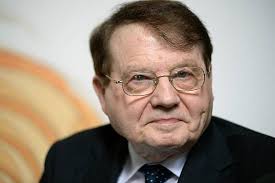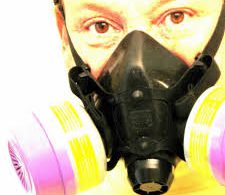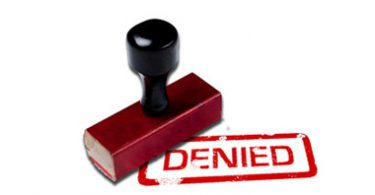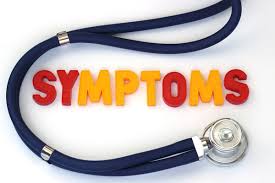
ABSTRACT: The homoeopathic aggravation is the essential and slight intensification of already existing symptoms after intake of similar homoeopathic medicine which can be taken as good prognostic indication, but sometimes it reaches to an injurious height with excessive intensification of existing symptoms due to improper selection of potency or repetition. Dr Hahnemann completed the 6th edition of Organon of Medicine in 1842 with necessary changes and additions and made it “the most nearly perfect of all”. All his intention for the revision was to make the cure rapid, gentle and permanent, which was achieved with the introduction of new altered but perfected method (50 millesimal potencies) through which the problem of unwanted aggravation could be easily controlled and made the process of cure gentle.
KEYWORDS: homoeopathic aggravation, new altered but perfected method, 50 millesimal potency.
INTRODUCTION: The highest ideal of cure is rapid, gentle and permanent restoration of the health. Dr Hahnemann experimented initially with the crude drug substances, later he changed to diluted drug substances and further developed the idea of potentisation. Even then he was not completely satisfied with the dosage and repetition of homoeopathic medicine until he experimented with NEW ALTERED BUT PERFECTED METHOD (50 millesimal potencies). The idea behind this change, i,e. reduction of drug substance quantitatively in the preparation of homoeopathic medicine, is to reduce the unwanted aggravation caused by the excessive drug substance and improper repetition.
HOMOEOPATHIC AGGRAVATION:
According to 5th edition Organon of Medicine:
In the 5th edition of Organon, Hahnemann talks about trying to produce the slightest homeopathic aggravation.
§ 279 fifth edition: The dose of the homoeopathically selected remedy can never be prepared so small that it shall not be stronger than the natural disease, and shall not be able to overpower, extinguish and cure it.1
§ 158 fifth edition: This slight homoeopathic aggravation during the first hours – a very good prognostic that the acute disease will most probably yield to the first dose.
§ 161 fifth edition: But where medicines of long action have to combat a malady of, considerable or of very long standing, where one dose, consequently, must continue to act for many days, we then occasionally see, during the first six, eight or ten days, the occurrence of some such primary actions, of the medicine, some such apparent increase of the symptoms of the original disease (lasting for one or several hours), while in the intervening hours amelioration of the whole malady is perceptible. After the lapse of these few days, the amelioration resulting from such primary action of the medicine proceeds almost uninterruptedly for several days longer.1
When a homoeopathic drug is administered, it is so similar to the natural disease that it therefore meets no resistance, because the sphere of its action is already invaded by the similar disease and its resistance, overcome by the similar acting disease-producing agent. The affected organs and tissues are open to attack; susceptibility to the similar remedy is therefore greatly increased. The homoeopathic remedy acts upon the identical tracts involved in disease states in a similar way to the disease-producing cause. In order that the suffering and distress may not be increased, it is therefore necessary to use only the smallest possible dose. For this reason, the homoeopathic dose is always short of the physiological or pathogenetic dose. It must be so small as not to produce too much aggravation of the symptom already present, and never large enough to produce new symptoms.2
We have never made the claim that every potency will suit everybody. The potency must correspond to the state of the patient.3
§ 275 Fifth Edition: The suitableness of a medicine for any given case of disease does not depend on its accurate homoeopathic selection alone, but likewise on the proper size, or rather smallness of the dose. If we give too strong a dose of a medicine which may have been even quite homoeopathically chosen for the morbid state before us, it must, notwithstanding the inherent beneficial character of its nature, prove injurious by its mere magnitude, and by the unnecessary, too strong impression which, by virtue of its homoeopathic similarity of action, it makes upon the vital force which it attacks and, through the vital force, upon those parts of the organism which are the most sensitive, and are already most affected by the natural disease.1
§ 276 Fifth Edition: For this reason, a medicine, even though it may be homoeopathically suited to the case of disease, does harm in every dose that is too large, the more harm the larger the dose, and by the magnitude of the dose it does more harm the greater its homoeopathicity and the higher the potency selected, and it does much more injury than any equally large dose of a medicine that is unhomoeopathic, and in no respect adapted (allopathic) to the morbid state; for in the former case the so-called homoeopathic aggravation (§157-§160) – that is to say, the very analogous medicinal disease produced by the vital force stirred up by the excessively large dose of medicine, in the parts of the organism that are most suffering and most irritated by the original disease – which medicinal disease, had it been of appropriate intensity, would have gently effected a cure – rises to an injurious height; the patient, to be sure, no longer suffers from the original disease, for that has been homoeopathically eradicated, but he suffers all the more from the excessive medicinal disease and from useless exhaustion of his strength.1
According to 6th edition Organon of Medicine:
§ 161 Sixth Edition : When I here limit the so-called homoeopathic aggravation, or rather the primary action of the homoeopathic medicine that seems to increase somewhat the symptoms of the original disease, to the first or few hours, this is certainly true with respect to diseases of a more acute character and of recent origin, but where medicines of long action have to combat a malady of, considerable or of very long standing, where no such apparent increase of the original disease ought to appear during treatment and it does not so appear if the accurately chosen medicine was given in proper small, gradually higher doses, each somewhat modified with renewed dynamization (§ 247). Such increase of the original symptoms of a chronic disease can appear only at the end of treatment when the cure is almost or quite finished.4
EVOLUTION OF 50 MILLESIMAL SCALE OF POTENCIES
The 6th edition, by Dr Hahnemann, the last one, was revised in 1842, one year before his death in 1843, but the manuscript was misplaced and not translated and published in english until 1921.
The reasons why he was not satisfied with the centesimal scale of potencies were the following.
1. The potencies were not acting rapidly.
2. The potencies used to produce violent aggravations.
3. The period of cure took long time to his great dissatisfaction. “Wait and watch” had serious faults and /or drawbacks.
4. The time and frequency of remedies for the dose, and repetition were difficult to ascertain correctly.
His highest ideal of cure as he mentions in the para 2 of the Organon of Medicine is to cure rapidly, gently and permanently. Hence, he felt the necessity of modifying the centesimal scale of potencies to achieve his idea of cure. Up to 5th edition of Organon of Medicine and later, there was no gentle cure. Hahnemann accomplished it with the 50 millesmal potencies at the end of his life.5
ADVANTAGES OF 50 MILLESIMAL POTENCIES
(1) Homoeopathic aggravation at the end of the treatment: Such increase of the original symptoms of a chronic disease can appear only at the end of treatment when the cure is almost or quite finished. The doses in that case must then be reduced still further and repeated in longer intervals and possibly stopped several days, in order to see if the convalescence need no further medicinal aid.
The apparent symptoms (schein-symptome) caused by the excess of the homoeopathic medicine will soon disappear and leave undisturbed health in its wake.
(2) Antidote during unwanted aggravation: “It must, therefore, either, if the aggravation be considerable, be first partially neutralized as soon as possible by an antidote before giving the next remedy chosen more accurately according to similarity of action; or, if the troublesome symptoms be not very violent, the next remedy must be given immediately, in order to take the place of the improperly selected one.”6
TABLE 1: COMPARISION BETWEEN 50 MILLESIMAL AND CENTESIMAL POTENCY5
| 50 MILLESIMAL POTENCY | CENTESIMAL POTENCY |
| 1. Preliminary aggravation is eliminated or at least controlled. | Slight preliminary homeopathic aggravation is desirable as that assures correctness of the selection of the remedy. |
| 2. Aggravation is deferred to the later phases of regulated repetition. | Aggravation occurs always in the first phase of the action of the remedy. |
| 3. Continued amelioration in the first phase; does not at all preclude repetition, which has to be suspended for a certain period only when the aggravation supervenes in the later phases of administration. | Both aggravation and amelioration preclude any question of repetition of the dose in any form. |
ADMINISTRATION OF 50 MILLESIMAL POTENCIES TO OVERCOME UNWWANTED AGGRAVATION:
In the Organon of Medicine, it is advised to succuss the medicinal solution for 8, 10 or 12 times. So we advise 8 succussions in case of a very sensitive patient, 10 for a less sensitive one and 12 times for the least sensitive patients. We also advise to put a dose of the solution after necessary succussions in a glass containing 4 oz of pure water and ask the patient to take one or two spoonfuls each time after stirring well.
As regards aggravation, one thing we must take into account. The weaker or more sensitive the vitality of the patient, the more will be the aggravation.
Over and above, a dose from the solution is to be administered in the following manner:
(a) Every hour or oftener in very urgent cases.
(b) Every two to six hours in acute diseases.
(c) Daily or every second day in chronic diseases.
If the patient cannot tolerate these prescribed doses and if the aggravation appears, then doses are to be applied at longer intervals.6
What if, an aggravation appears with such a dose of 50 millesimal potency?
If the patient is “unusually excited and sensitive, a tea- spoonful (a dose) of this solution may be put in a second glass of water, thoroughly stirred and tea-spoonful doses or more be given. There are patients of so great sensitiveness that a third or fourth glass, similarly prepared, may be necessary. Each such prepared glass must be made fresh daily.”
After completion of the said first course of medicine (of the LM/1 or LM/2 or LM/3 dilution), the next higher potency will have to be prepared in the same manner. The vial and cork must be new every time. In this way medicinal solutions for other potencies (LM/4, to LM/5, etc.) should be prepared.6
The well selected medicine for the second prescription should also be started from the lowest degrees (i.e., one of the potencies from LM/1 to LM/3) and the medicinal solutions should be prepared as above.
DIRECTIONS TO BE FOLLOWED AT END AGGRAVATION:
In case of final aggravation, the dose must be reduced, or straight way stopped. The apparent symptoms caused by excess of the homoeopathic medicines will soon disappear and leave undisturbed health in its wake.7
§ 281 Sixth Edition: In order to be convinced of this, the patient is left without any medicine for eight, ten of fifteen days, meanwhile giving him only some powders of sugar of milk. If the few last complaints are due to the medicine simulating the former original disease symptoms, then these complaints will disappear in a few days or hours. If during these days without medicine, while continuing good hygienic regulations nothing more of the original disease is seen, he is probably cured.
But, if in the later days, traces of the former morbid symptoms should show themselves, they are remnants of the original disease not wholly extinguished, which must be treated with renewed higher potencies of the remedy as directed before. If a cure is to follow, the first small doses must likewise be again gradually raised higher, but less and more slowly in patients where considerable irritability is evident than in those of less susceptibility, where the advance to higher dosage may be more rapid.4
CONCLUSION: Thus, in chronic diseases, every correctly chosen homoeopathic medicine, even those whose action is of long duration, may be repeated daily for months with ever increasing success with the method of RENEWED DYNAMIZATION (new altered but perfected method), i.e. 50 MILLESIMAL POTENCIES. The homoeopathic aggravation in acute disease is slighter and shorter during first few hours where as in the treatment of chronic diseases, such increase of original symptoms of a chronic disease can appear only at the end of the treatment when the cure is almost or quite finished. Any unwanted aggravation of original symptoms of chronic disease during the process of treatment can easily be controlled, while using 50 millesimal potencies according to 6th edition Organon of Medicine, which makes the homoeopathic treatment gentle as desired by Dr Hahnemann and humanity.
REFERENCES:
1. Hahnemann S, Organon of Medicine, 5th edition, New Delhi, B.Jain Publishers(p) ltd,2002, p97-98,140-142.
2. Roberts HA, The Principles and Art of Cure by Homeopathy, New Delhi, Indian Books & Periodicals Publishers, 2008, p 119.
3. Kent JT, Lectures on Homeopathic Philosophy, New Delhi, Indian Books & Periodical Publishers, 2006, p209.
4. Hahnemann S, Organon of Medicine, 6th edition, New Delhi, Indian Books & Periodical Publishers, 2003, p 209,255,281-282.
5. Patel R.P, My Experiments with 50 Millesimal Potencies, 6th edition, Vadodara, Dr.R.P Patel Institute of Homeopathy for research and Education in Homeopathy, 2010, P 54,58.
6. Choudhury H, 50 Millesimal Potency in Theory and Practice, 3rd revised and enlarged edition, New Delhi, B.Jain Publishers(p) ltd, 2012, p 28-30, 32-34.
7.Villalva FF, LM Scale 50 Millesimal Potencies, New Delhi, B.Jain Publishers (p) ltd, 2012, p 21.





